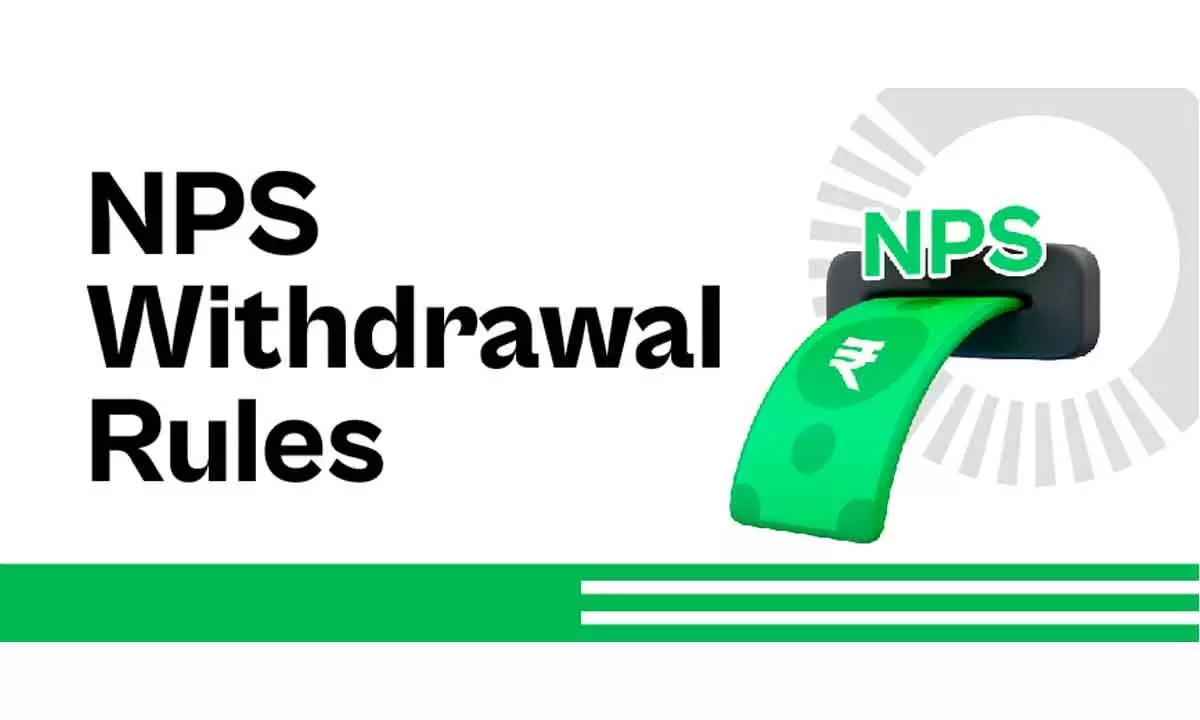Phased withdrawal options for the NPS subscribers
This facility allows the subscribers to not to withdraw or redeem the limit of 60% at once but avail it staggered over, up to next 15 years
image for illustrative purpose

This facility is similar to the existing Systematic Withdrawal Plan of Mutual Funds. Now, the subscriber has an option to withdraw the desired amount systematically at regular intervals matching their needs
The Pension Fund Regulatory and Development Authority (PFRDA) of India has been introducing reforms that are making it seamless for the subscribers. On Oct 27th, it has introduced significant changes by providing attractive withdrawal options to the subscribers of the National Pension Scheme (NPS). The regulator has proposed Systematic Lumpsum Withdrawal (SLW) facility for the subscribers which allows for a phased withdrawal of the lumpsum amounts.
According to the latest rules, the subscribers could withdraw up to the 60 percent of their corpus through the SLW facility on a regular interval of monthly, quarterly, half-yearly or annual basis. This is allowed up to the age of 75 years, as chosen at the time of their usual retirement, ie, at the minimum age of 60 years. Of course, the limit of 60 per cent is existing but this facility allows the subscribers to not to withdraw or redeem the limit (60 per cent) at once but avail it staggered over, up to the next fifteen years.
The existing guidelines allow the subscribers post the age of 60 years or superannuation could defer availing of annuity and withdrawing the lumpsum on any combination till 75 years of age. The lumpsum amount can be withdrawn in a single tranche or on an annual basis. If withdrawn annually, the subscriber must intimate the withdrawal request each time and get it authorised. But, with the new amendment, a phased option is allowed for the subscriber to withdraw the limit up to 60 per cent of their corpus through the SLW facility.
This facility is similar to the existing Systematic Withdrawal Plan (SWP) of Mutual Funds (MF). Now, the subscriber has an option to withdraw the desired amount systematically at regular intervals matching their needs. This allows the subscribers to not bother of re-investing the corpus (if 60 per cent is withdrawn at once), generates regular cash inflows, increased regular cash flows (as the rest of the corpus ie, 40 per cent has to be anyways opted as an annuity), possible re-investment returns, as the unaccused corpus continues to generate returns and the tax benefits of SLW withdrawal (staggered over a period and so possible lower rate).
However, this rule is not mandatory like that of the 40 per cent of the corpus to be opted as an annuity condition. It’s only to those who would want to substantiate their annuity with a regular higher inflow from the corpus without worrying to utilise the entire corpus. Also, the limit of up to age 75 years also allows the subscribers to have a higher inflow for the immediate fifteen years from the time of retirement (age 60 years). The NPS subscribers continue enjoy the one-time withdrawal option of up to 60 per cent also.
The regulator in its recent circular also mandated to ensure timely credit of NPS funds to the bank account of the subscriber at the time of withdrawal or exit from the scheme. The verification of the account would be done through the penny-drop method. It stated that the penny drop verification has to be necessarily successful with the name matching, for the processing of the exit/withdrawal requests and also for modifying the subscriber’s bank account details. Penny drop verification is a process of account verification that involves in depositing or transferring a small amount (usually Rs 1) in the subscriber’s bank account authentication before crediting the entire funds to the beneficiary.
As a protection from misuse or fraud, in the event that the failure of the penny drop, no request for the exit/ withdrawal or altering the subscriber’s bank account data will be permitted. This is the function of the Central Recordkeeping Agency (CRA), which is responsible for record keeping, administration and customer service of all the NPS subscribers. Also, in case of a failure of penny drop, the CRA will conduct adequate verification and additional due diligence process before executing any exit or withdrawal requests.
(The author is a co-founder of “Wealocity”, a wealth management firm and could be reached at [email protected])

